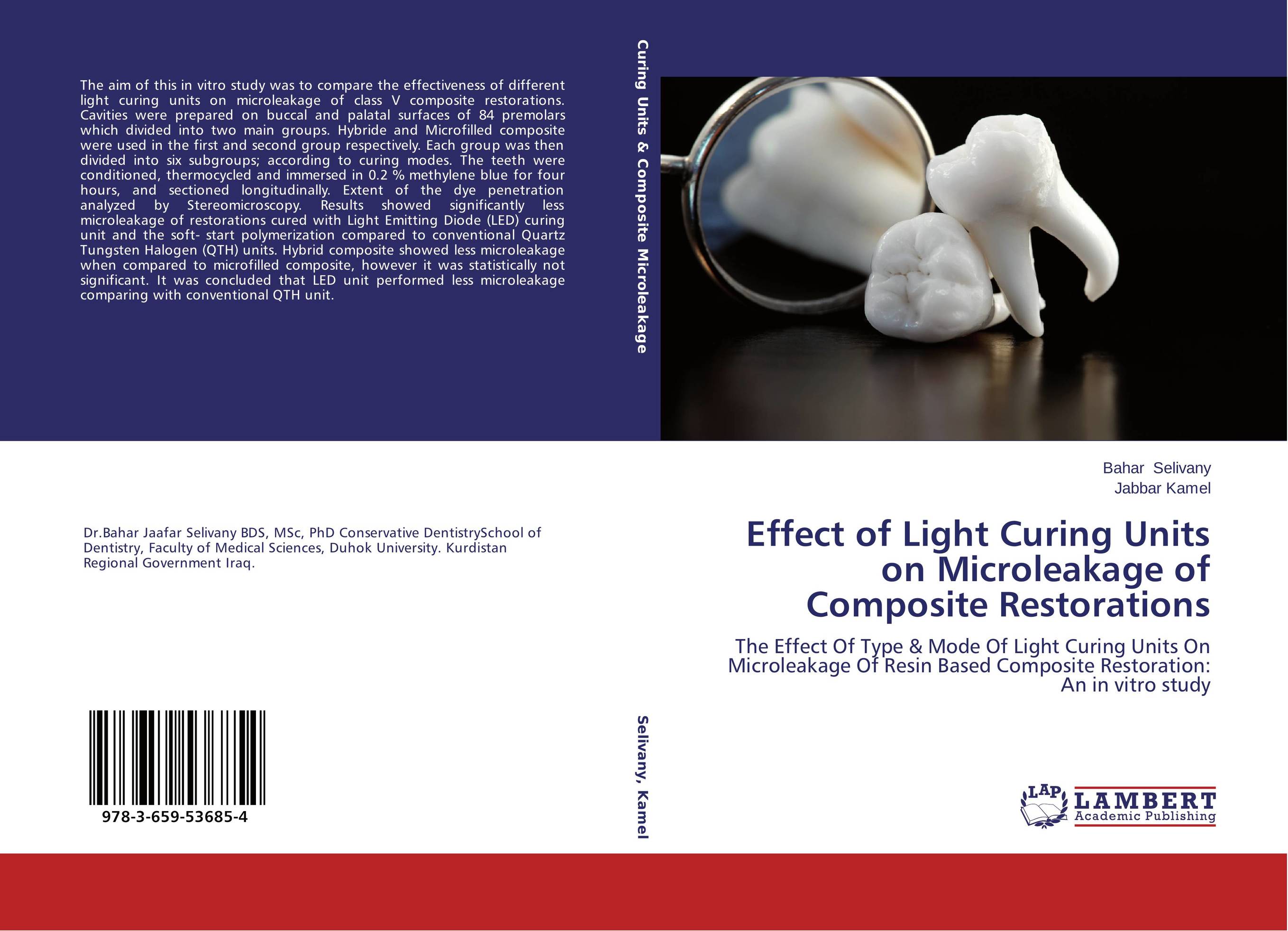| Поиск по каталогу |
|
(строгое соответствие)
|
- Профессиональная
- Научно-популярная
- Художественная
- Публицистика
- Детская
- Искусство
- Хобби, семья, дом
- Спорт
- Путеводители
- Блокноты, тетради, открытки
Effect of Light Curing Units on Microleakage of Composite Restorations. The Effect Of Type & Mode Of Light Curing Units On Microleakage Of Resin Based Composite Restoration: An in vitro study

В наличии
| Местонахождение: Алматы | Состояние экземпляра: новый |

Бумажная
версия
версия
Автор: Bahar Selivany and Jabbar Kamel
ISBN: 9783659536854
Год издания: 2014
Формат книги: 60×90/16 (145×215 мм)
Количество страниц: 136
Издательство: LAP LAMBERT Academic Publishing
Цена: 24456 тг
Положить в корзину
| Способы доставки в город Алматы * комплектация (срок до отгрузки) не более 2 рабочих дней |
| Самовывоз из города Алматы (пункты самовывоза партнёра CDEK) |
| Курьерская доставка CDEK из города Москва |
| Доставка Почтой России из города Москва |
Аннотация: The aim of this in vitro study was to compare the effectiveness of different light curing units on microleakage of class V composite restorations. Cavities were prepared on buccal and palatal surfaces of 84 premolars which divided into two main groups. Hybride and Microfilled composite were used in the first and second group respectively. Each group was then divided into six subgroups; according to curing modes. The teeth were conditioned, thermocycled and immersed in 0.2 % methylene blue for four hours, and sectioned longitudinally. Extent of the dye penetration analyzed by Stereomicroscopy. Results showed significantly less microleakage of restorations cured with Light Emitting Diode (LED) curing unit and the soft- start polymerization compared to conventional Quartz Tungsten Halogen (QTH) units. Hybrid composite showed less microleakage when compared to microfilled composite, however it was statistically not significant. It was concluded that LED unit performed less microleakage comparing with conventional QTH unit.
Ключевые слова: Resin composite, curing modes, micro leakage



